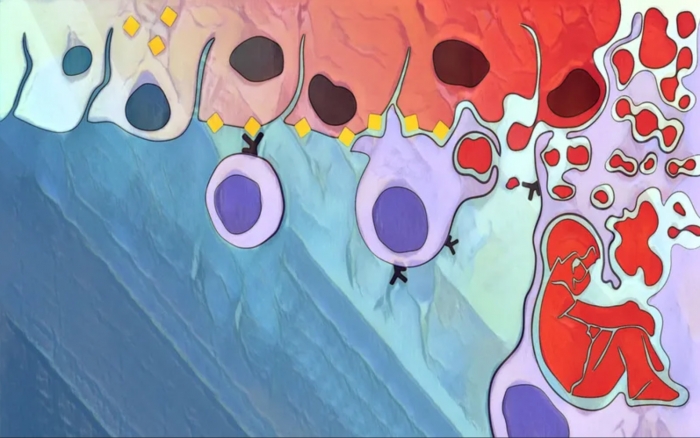 courtesy: CZ BioHub
courtesy: CZ BioHub
- Written by Moderator
Scientists Get to the Bottom of COVID’s Worst Pediatric Complication
FeaturedStudy reveals a mechanism behind multisystem inflammatory syndrome in children (MIS-C)
Early in the pandemic, some children fought off COVID with few, if any, symptoms, only to go into organ failure a few weeks later. Most recovered after aggressive treatment, but their sudden illness, dubbed multisystem inflammatory syndrome in children (MIS-C), remained a mystery. Now, a team of scientists from UC San Francisco, Chan Zuckerberg Biohub San Francisco, St. Jude Children’s Research Hospital, and Boston Children’s Hospital has discovered what led to many of these cases, with a study that has implications for other autoimmune diseases.
The researchers found that the children’s immune systems had latched onto a part of the coronavirus that closely resembles a protein found in the heart, lungs, kidneys, brain, skin, eyes, and GI tract, and launched a catastrophic attack on their own tissues. Co-senior author Mark Anderson, who directs the Diabetes Center at UCSF and is also a CZ Biohub SF Investigator, suggested Bodansky try a tool that he and Joe DeRisi, president of CZ Biohub SF, were using, called Phage Immunoprecipitation Sequencing (PhIP-Seq), to see if it could uncover the cause of MIS-C. PhIP-Seq screens blood for autoantibodies, or antibodies that mistakenly attack the human body rather than an outside threat, such as a virus. DeRisi, corresponding author and professor of biophysics and biochemistry at UCSF, had already used PhIP-Seq to understand severe neurological symptoms, as well as the link between viral infections and multiple sclerosis.
“Thanks to our world-class team we’ve found an answer for how children get this mysterious disease,” said Aaron Bodansky, a critical care fellow in UCSF’s Department of Pediatrics and lead author of the paper. “We hope this kind of approach can help break new ground in understanding similar diseases of immune dysregulation that have stumped us for decades, like multiple sclerosis or type 1 diabetes.”
The research results are published in this Nature article.
Read the full article at CZ BioHub News.
Visible Legacy Comment
By tracing the disease from virus to autoantibody to T cell, the findings point to a new way of investigating – and hopefully one day treating – autoimmune disease more generally. Dr. DeRisi indicates that this paper actually finds the mechanism that makes children so sick and opens the door to understanding other post-infectious diseases causing inflammatory autoimmune events. To explore more of the context of the high-throughput, proteome-wide phage immunoprecipitation sequencing (PhIP-Seq) used in the lab, please follow the link below to explore technologies available for license through CZ BioHub.
Additional Info
-
Navigator:
 Explore the map in Navigator
Explore the map in Navigator - Widget:
- Caption: CZ BioHub available technologies
Related items
- The future of health care is in our cells
- Federal funding will help WSU professor develop technology to recover rare earth elements
- Unlocking the brain: Peptide-guided nanoparticles deliver mRNA to neurons
- WSU-inspired national gene-editing task force begins work
- Multi-Tasking Wearable Continuously Monitors Glucose, Alcohol, and Lactate
